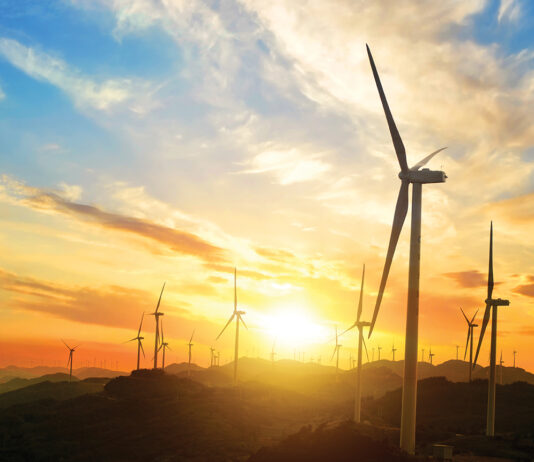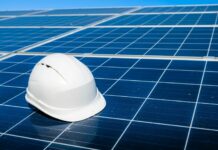
For the future of renewable energy to be successful, America’s aging energy infrastructure needs a vast amount of investment. The U.S. grid requires significant work to prepare for the rise in renewable energy sources across the country. States are picking up the pace of their electrification plans, but a lack of cohesion could hold it back.
The outdated U.S. grid is threatening the progress of renewable energy projects. There will be insufficient infrastructure available to deliver power across the country from new green energy projects unless a massive modernization project is carried out. America’s transmission network is consistently brought down by challenges like a simple shift in the weather. So what hope is there for a green revolution if the grid cannot handle the existing energy demand countrywide?
Texas, California, and several other states face annual power outages due to severe weather events, from winter storms to heatwaves, but little appears to be being done as Texans are once again told to curb their power usage for fear of blackouts. And this is nothing new, as residents across the U.S. are regularly urged to alter their energy use due to technical problems with state energy infrastructure.
As climate change poses the threat of more regular extreme weather events, the demand for electricity rises, especially as the population increases. States are looking to electrify as renewable energy projects are being developed, thus, there is little hope for America’s existing infrastructure. The U.S. requires trillions of dollars in investment if it hopes to prepare its energy infrastructure for the future needs of the people and a green transition. This includes the complete overhaul of transmission wires, substations, and transformers across the country.
Many restrictions faced in modernizing the U.S. transmission system are due to the fractured nature of the country’s energy infrastructure. Presently, the federal government cannot carry out the necessary work on the grid structure, as the existing regulatory organization means that infrastructure investments are managed by a plethora of local, state, and regional regulators who all have different approaches to spending.
These regulatory bodies would have to agree to increased rates, despite the strong pushback from consumers and state governments to keep utility costs down. Further, disagreements between state governments restrict the potential for power-sharing agreements and infrastructure-building across state borders.
There is some optimism around the future of America’s energy infrastructure, as President Biden announced plans for $2.5 billion in grants for grid modernization in April. This is part of his bipartisan $1 trillion infrastructure bill, which was passed into law last November. It also forms part of Biden’s ambitious renewable energy plans under the Green New Deal. However, it’s not all clear sailing as the fractured approach to the country’s grid could lead to ineffective spending, due to a lack of cohesion across states.
Some states are already being held back by specific bottlenecks and construction delays, despite major infrastructure plans being approved. In Maine, state and federal permits have been granted for the construction of a 53-mile, 54-foot-wide extension to its transmission line corridor, aimed at delivering 1,200 megawatts of renewable hydroelectric power, from Canada to Massachusetts, to power 1.2 million homes. However, the $1-billion project has seen fierce opposition from Maine residents who fear it would damage the environment and would not resolve the state’s increasing blackout issues.
In addition to residents, oil and gas companies are fighting against the extension. Anthony Buxton, the lawyer representing the firms building the line, stated “This battle is the Lexington or Concord of the existential war to defeat global warming.” He added, “If fossil fuel interests can block 1,200 megawatts of fully permitted, renewable hydroelectricity to help New England reach zero carbon, our future is hot and bleak.” This one case demonstrates how complicated it can be for states to achieve energy infrastructure ambitions with challenges coming from all sides.
So, how can the U.S. hope to modernize its energy infrastructure with so many factors holding it back? The Department of Energy (DoE) has highlighted infrastructure as the key to an America powered by renewables. They have stated that “As we reimagine and rebuild America to prepare for a net-zero future, a modernized electricity grid is a critical component to increasing resiliency in our most essential services and infrastructure.”
The DoE points out several key components to modernizing the country’s energy infrastructure. This includes the development of self-sufficient microgrids for wind and solar developments, smart metering for consumers, the incorporation of grid-scale energy storage devices, grid hardware to carry, convert, and control power, and the construction of a grid that supports electric vehicles, charging stations, newly connected communities, and increased integration of carbon-free resources like solar and wind. But to achieve this objective, the government must ensure that regulatory bodies, state governments, and energy firms across the U.S. act cohesively to manage infrastructure funds and share power effectively.

Felicity Bradstock is a freelance writer specializing in Energy and Industry. She has a Master’s in International Development from the University of Birmingham, UK, and is now based in Mexico City.
If you would like to contact our staff writers, you can reach them at [email protected]
















